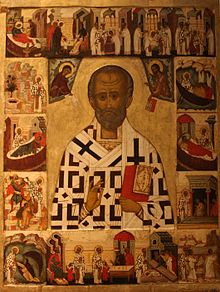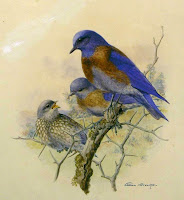Was He Real?
“The three most important Nicholas experts of the 20th century expressed grave doubts about Nicholas's existence…. Many people even now think of him as only legendary. But when you study the documents and the evidence, it's surprising to find there's a wealth of evidence that attests to his deeds and his existence.”
During his research, English visited an archive library in Bari, Italy and found significant primary sources on this 4th century Bishop. Nicholas was Bishop of Myra ( now Demre) in Lycia in present day Turkey and later his remains were moved to Bari, Italy where there is now a basilica with all of the usual Roman Catholic Trappings.
What was he like?
With written evidence and tradition we can began to piece together the life and character of this man who would unwittingly inspire the modern day Santa Claus.
According to tradition Nicholas was known as a gift giver (obviously one of Santa’s most notable traits). The most famous story in regards to this is when Nicholas gave money for dowries to three sisters who were in desperate poverty thus saving them from a life of likely prostitution. He does it quietly and anonymously provoking Professor English to remark, “You don't find anything like it in the stories of contemporary saints of the time, nor in other folklore.”
Bishop Nicholas by all accounts seems to have a deep and sincere love of Christ. He was imprisoned for his faith under the Roman Emperor Diocletian and likely bore the scars of the persecuted. He also stood against the Arian heresy which attacked the deity of Christ at the Council of Nicaea.
To quote a 2013 National Geographic article, “The modern American Santa was born in the Mediterranean, evolved across northern Europe, and finally assumed his now-familiar form on the shores of the New World.”
This refers, of course, first to Nicholas of Myra then to characters such as the Dutch SinterKlass (directly inspired by Nicholas) and the English Father Christmas as well as some Germanic and Scandinavian folklore. Finally all of these entities were blended together in the New World in what we now know (at least in North America) as Santa Claus. Early 19th century American poems like “The Children’s Friend” and “Twas the Night Before Christmas” were integral in constructing today’s secular Santa.
St. Nicholas’ Day is actually December 6th ( and many children in Europe still receive gifts that day) but through the Reformation the date of Christmas gift giving was eventually changed to the 25th of December.
The Puritans were highly critical of the notion of Santa Claus and Christmas altogether. They related it only to Roman Catholicism and Paganism. During the Reformation a more Biblical view of “saints” was taken and their veneration was highly discouraged. Martin Luther tried to introduce a new gift giver into the mix - “Christkindl” or the Christ Child - however the name became pronounced Kris Kringle and, ironically, was later associated with Santa Claus.
And, of course, the mass commercialism we see today is often a deterrent to the notion of Santa Claus – but let’s remember we aren’t talking about Santa Claus – we’re talking about Nicholas of Myra, the historic man. It should also be noted that even through the rightful downplay of saints during the Reformation, Nicholas lasted as a simple example of Christ-likeness.
This has always been a bit controversial and I have no intention on glorifying Santa Claus. However, I believe there is a way to look at the original Nicholas and see the light of Jesus Christ reflected – to give Jesus glory.
Bishop Nicholas by all accounts seems to have a deep and sincere love of Christ. He was imprisoned for his faith under the Roman Emperor Diocletian and likely bore the scars of the persecuted. He also stood against the Arian heresy which attacked the deity of Christ at the Council of Nicaea.
St. Nicholas and Santa Claus
This refers, of course, first to Nicholas of Myra then to characters such as the Dutch SinterKlass (directly inspired by Nicholas) and the English Father Christmas as well as some Germanic and Scandinavian folklore. Finally all of these entities were blended together in the New World in what we now know (at least in North America) as Santa Claus. Early 19th century American poems like “The Children’s Friend” and “Twas the Night Before Christmas” were integral in constructing today’s secular Santa.
St. Nicholas’ Day is actually December 6th ( and many children in Europe still receive gifts that day) but through the Reformation the date of Christmas gift giving was eventually changed to the 25th of December.
Criticism:
The Puritans were highly critical of the notion of Santa Claus and Christmas altogether. They related it only to Roman Catholicism and Paganism. During the Reformation a more Biblical view of “saints” was taken and their veneration was highly discouraged. Martin Luther tried to introduce a new gift giver into the mix - “Christkindl” or the Christ Child - however the name became pronounced Kris Kringle and, ironically, was later associated with Santa Claus.
And, of course, the mass commercialism we see today is often a deterrent to the notion of Santa Claus – but let’s remember we aren’t talking about Santa Claus – we’re talking about Nicholas of Myra, the historic man. It should also be noted that even through the rightful downplay of saints during the Reformation, Nicholas lasted as a simple example of Christ-likeness.
How Christians Should Acknowledge Him
C.S. Lewis inserted a Santa Claus type character into his Chronicles of Narnia not as a competitor to Aslan but as one subservient to Him. And Adam English feels there is some benefit to be gained by learning about the bishop:
“But at Christmas, we have an opportunity to highlight a core Christian value, which is loving our neighbors. By highlighting St. Nicholas, we can recover an alternative to commercialization and greed, celebrating the life of a true Christian example, who gave of his own, who helped the less fortunate, and who shared the love of Christ.”
Whatever traditions we incorporate into our Christmas celebrations this year let them all be to the glory of the Lord Jesus – the One whose birth we honour and rejoice in. It is His unfathomable condescension from Heaven’s throne into this dark and broken world that gives us hope and that gave Nicholas hope. It was Jesus to whom Nicholas bowed down, whom he loved and whom he lived his life for. Jesus Christ was nothing less to Nicholas than Lord and Saviour.
As Pastor Kevin DeYoung says, “So this Christmas, give gifts if you like. We will in our family. Receive them all with thanksgiving. But do not forget what we need most–salvation through substitution. This is one gift the real St. Nicholas would not have overlooked.”
“And she will bring forth a Son, and you shall call His name JESUS, for He will save His people from their sins.” Matthew 1:21
Sources for this article:
"Was the Real St. Nick Better than Santa Claus" An interview with Adam C. English in Christianity Today http://www.christianitytoday.com/ct/2012/december/better-than-santa.html
Wikipedia
"St. Nicholas to Santa: The Surprising Origins of Mr. Claus" Brian Handwerk, National Geographic
Who Was St. Nicholas?" Kevin Deyoung, The Gospel Coalition http://www.thegospelcoalition.org/blogs/kevindeyoung/2012/12/14/who-was-st-nicholas/
“But at Christmas, we have an opportunity to highlight a core Christian value, which is loving our neighbors. By highlighting St. Nicholas, we can recover an alternative to commercialization and greed, celebrating the life of a true Christian example, who gave of his own, who helped the less fortunate, and who shared the love of Christ.”
Whatever traditions we incorporate into our Christmas celebrations this year let them all be to the glory of the Lord Jesus – the One whose birth we honour and rejoice in. It is His unfathomable condescension from Heaven’s throne into this dark and broken world that gives us hope and that gave Nicholas hope. It was Jesus to whom Nicholas bowed down, whom he loved and whom he lived his life for. Jesus Christ was nothing less to Nicholas than Lord and Saviour.
As Pastor Kevin DeYoung says, “So this Christmas, give gifts if you like. We will in our family. Receive them all with thanksgiving. But do not forget what we need most–salvation through substitution. This is one gift the real St. Nicholas would not have overlooked.”
“And she will bring forth a Son, and you shall call His name JESUS, for He will save His people from their sins.” Matthew 1:21
Sources for this article:
"Was the Real St. Nick Better than Santa Claus" An interview with Adam C. English in Christianity Today http://www.christianitytoday.com/ct/2012/december/better-than-santa.html
Wikipedia
"St. Nicholas to Santa: The Surprising Origins of Mr. Claus" Brian Handwerk, National Geographic
Who Was St. Nicholas?" Kevin Deyoung, The Gospel Coalition http://www.thegospelcoalition.org/blogs/kevindeyoung/2012/12/14/who-was-st-nicholas/

































